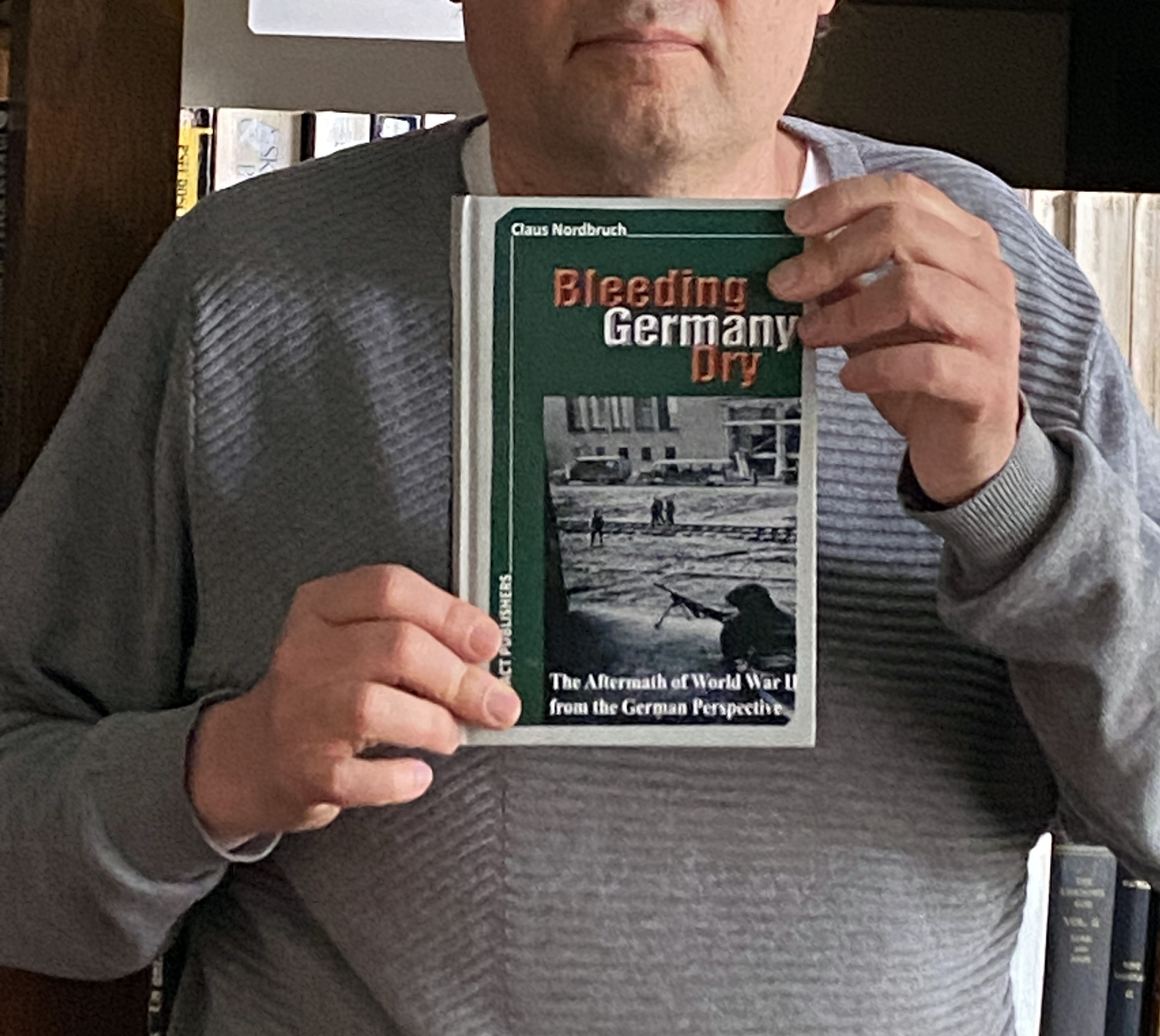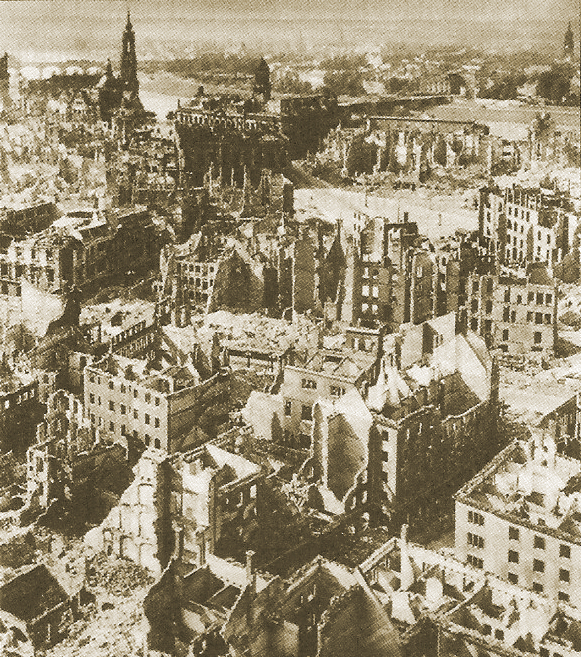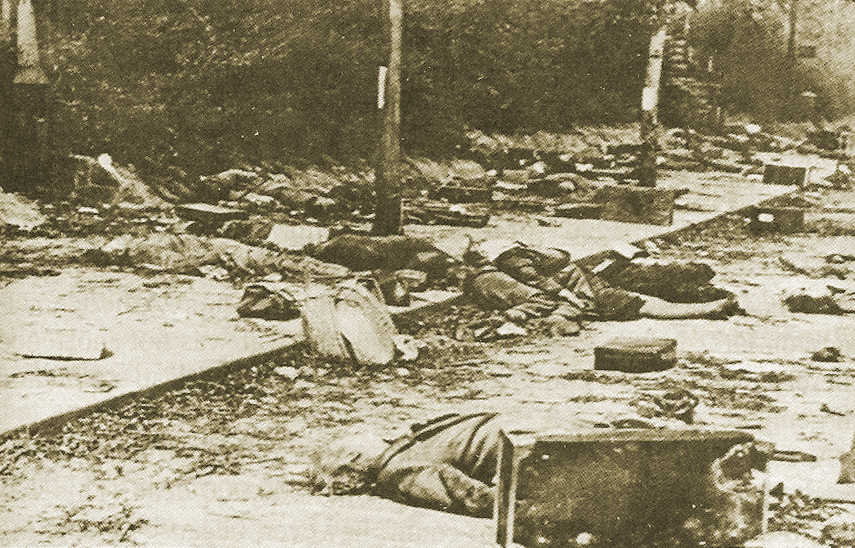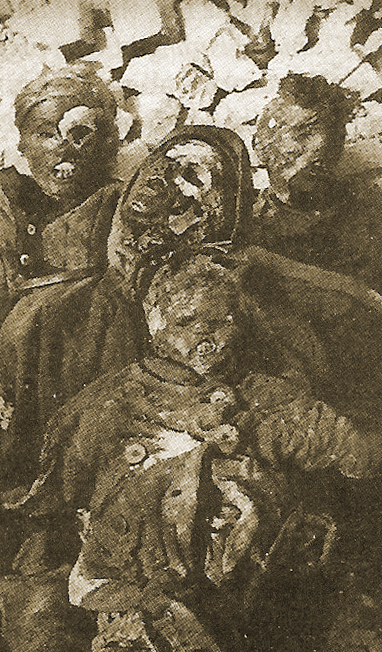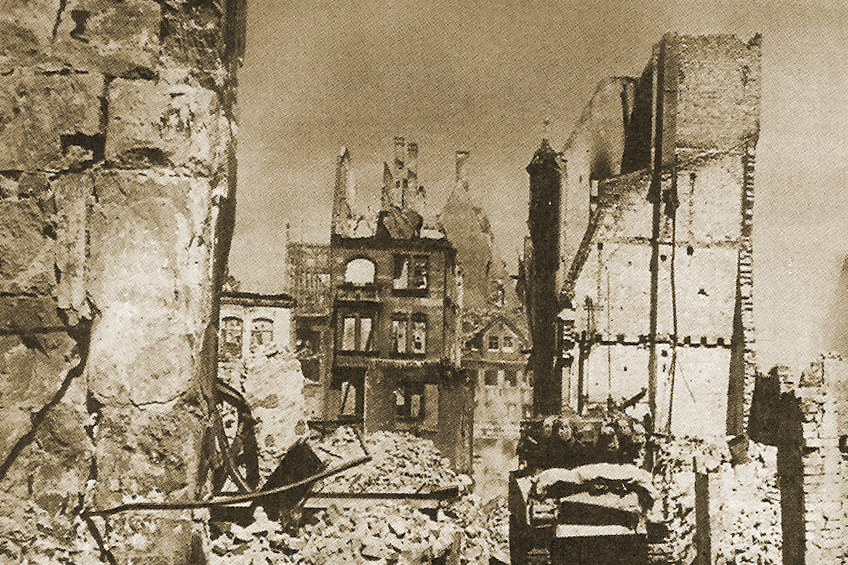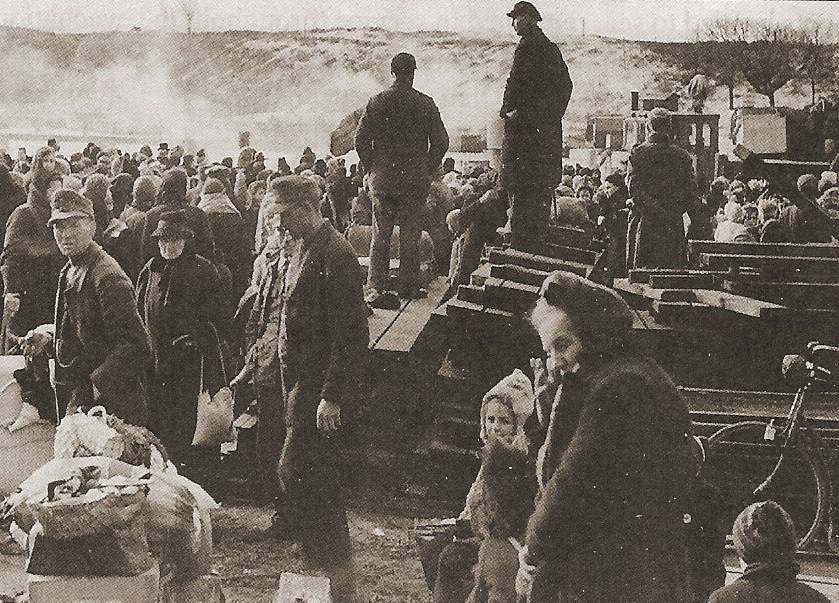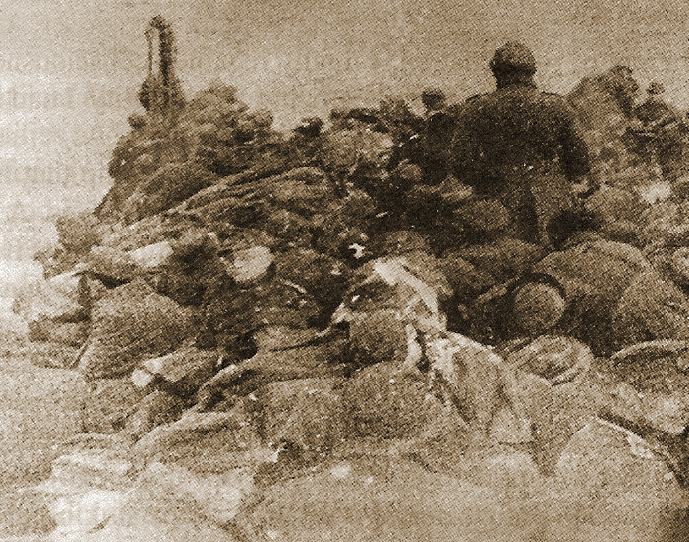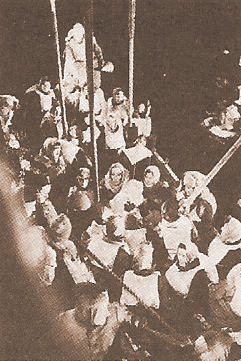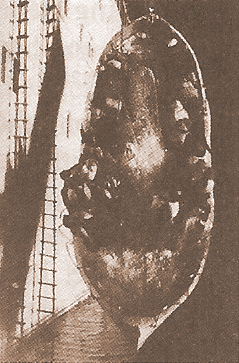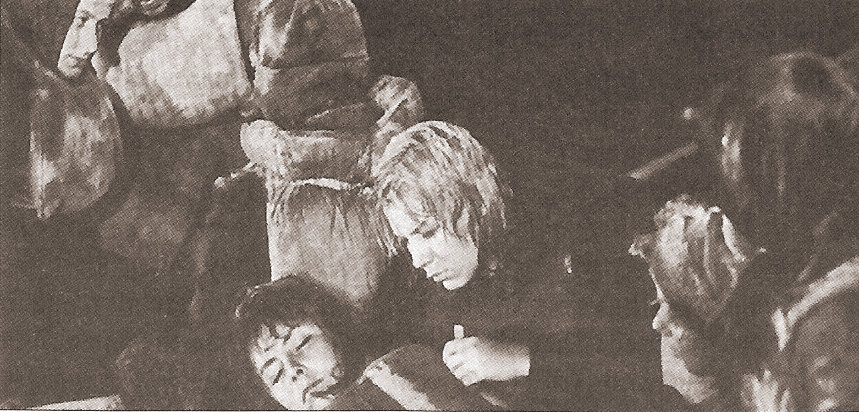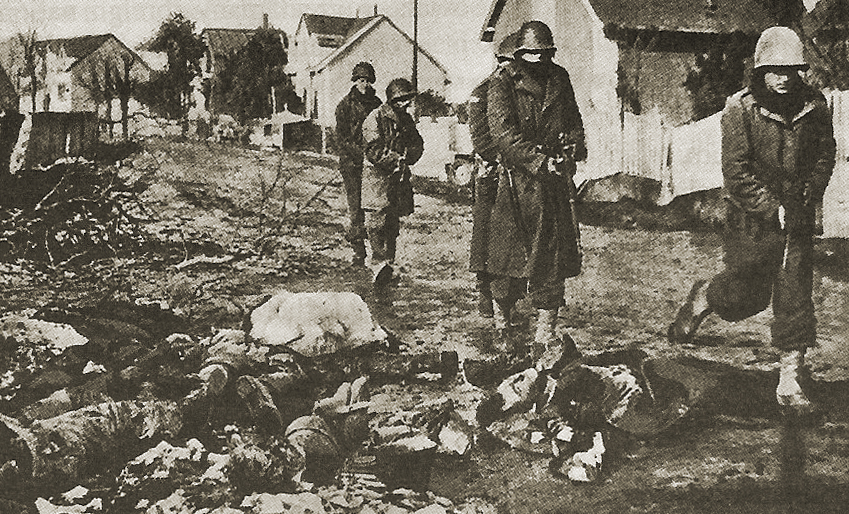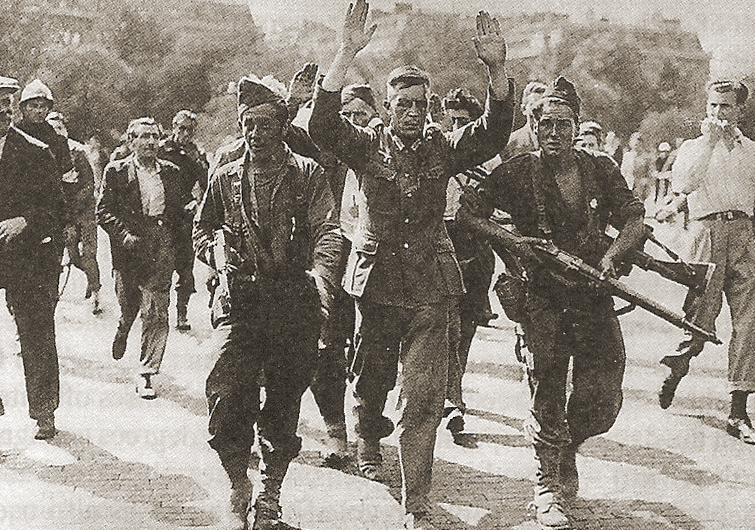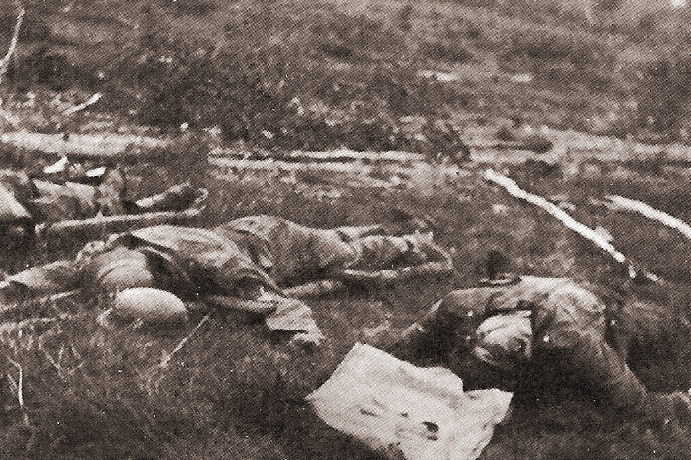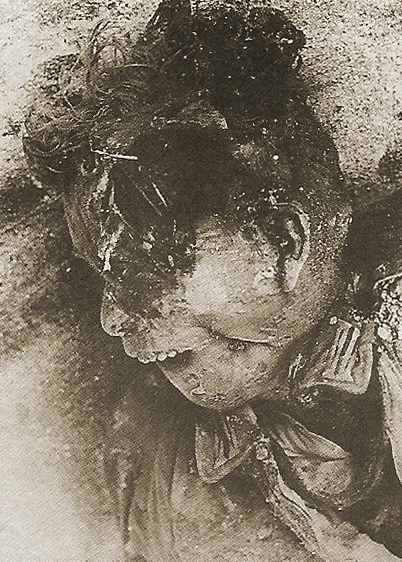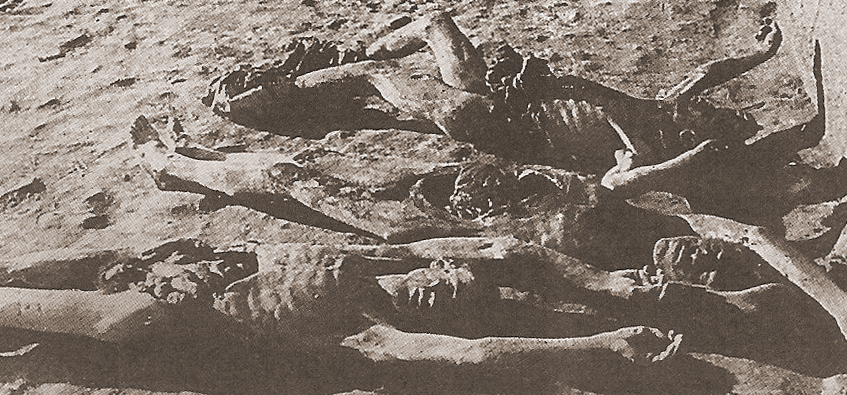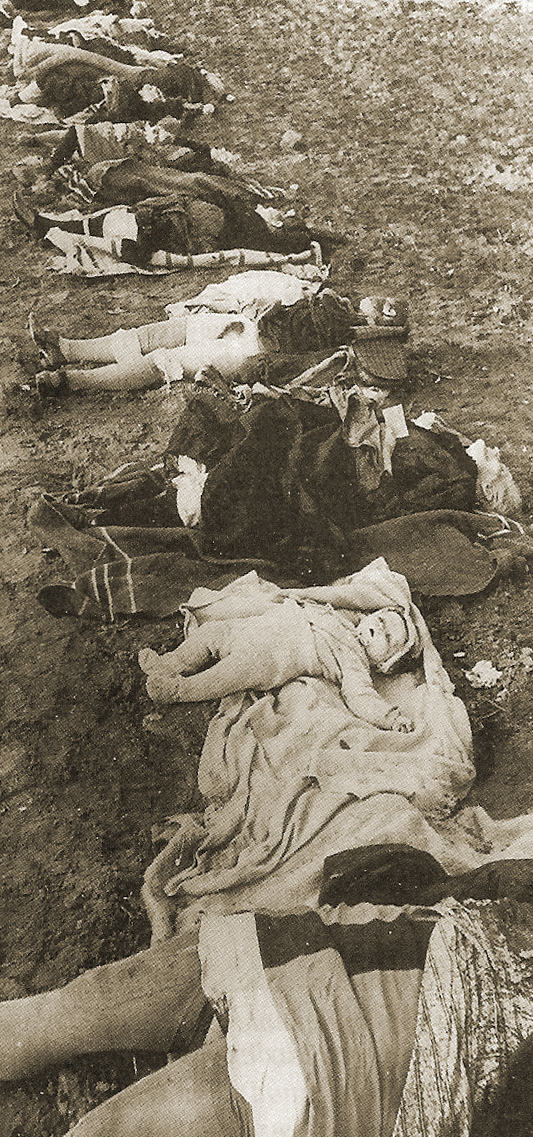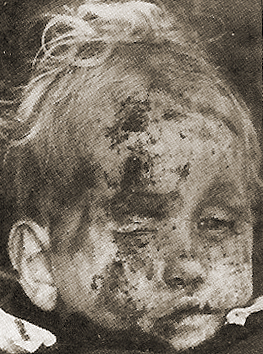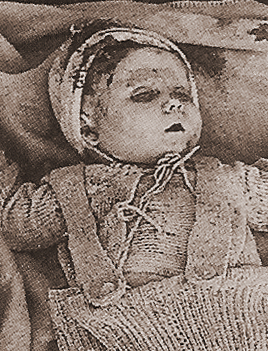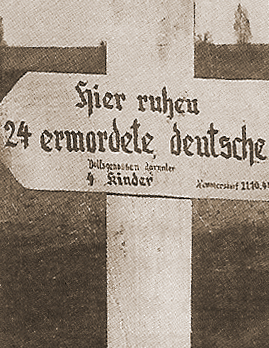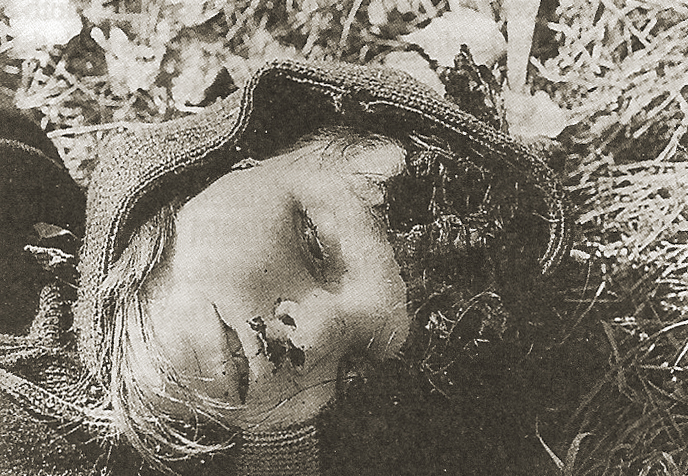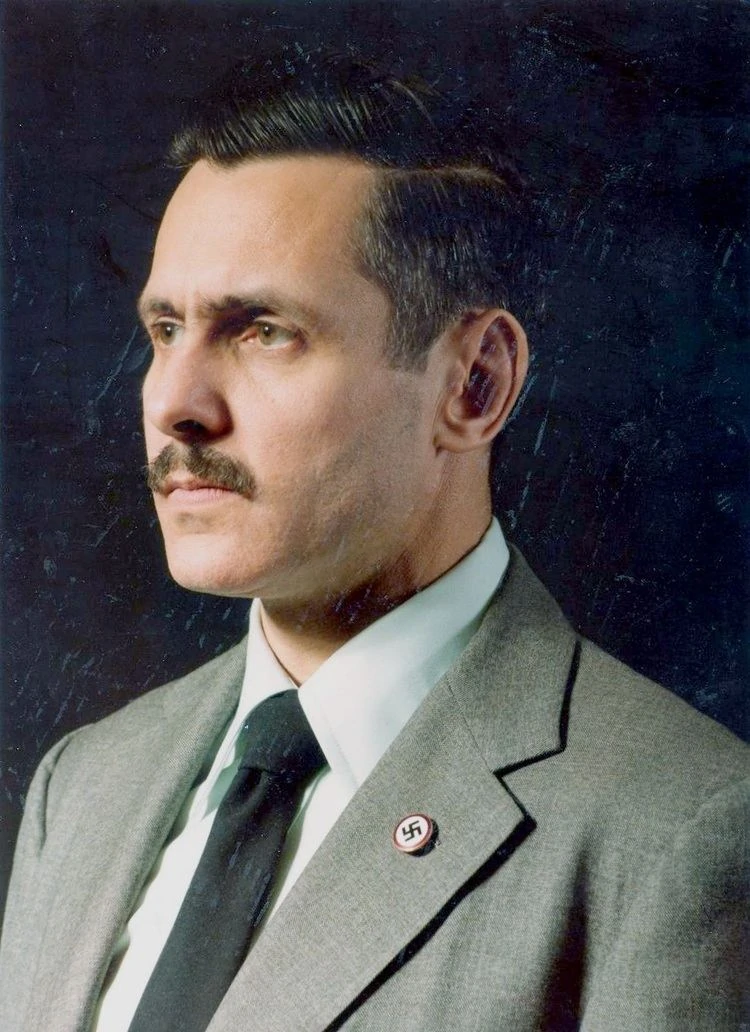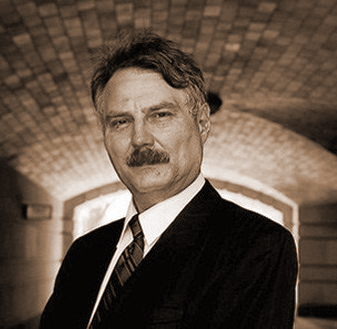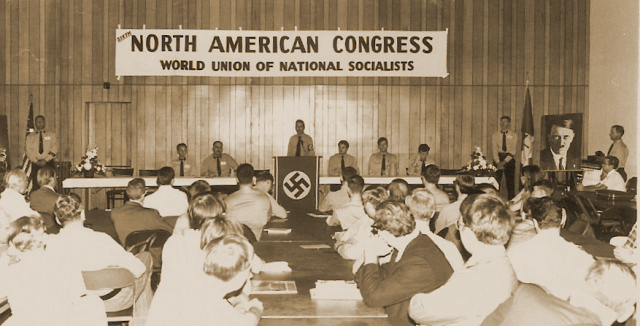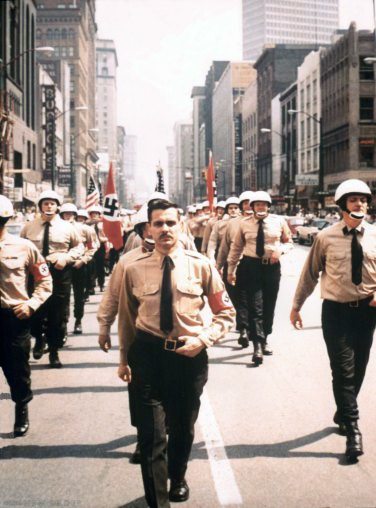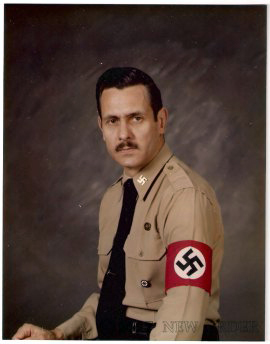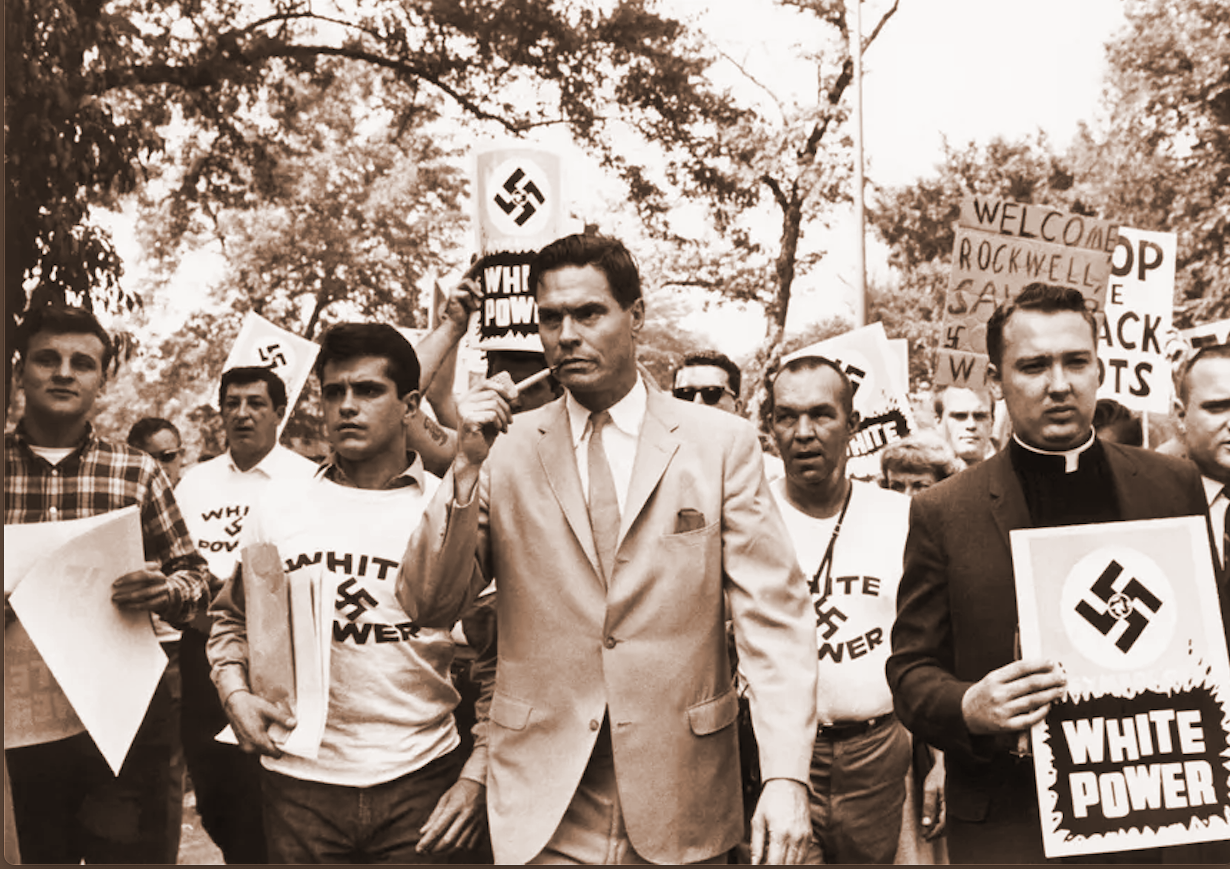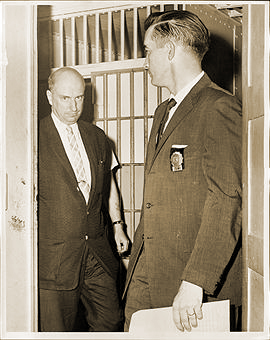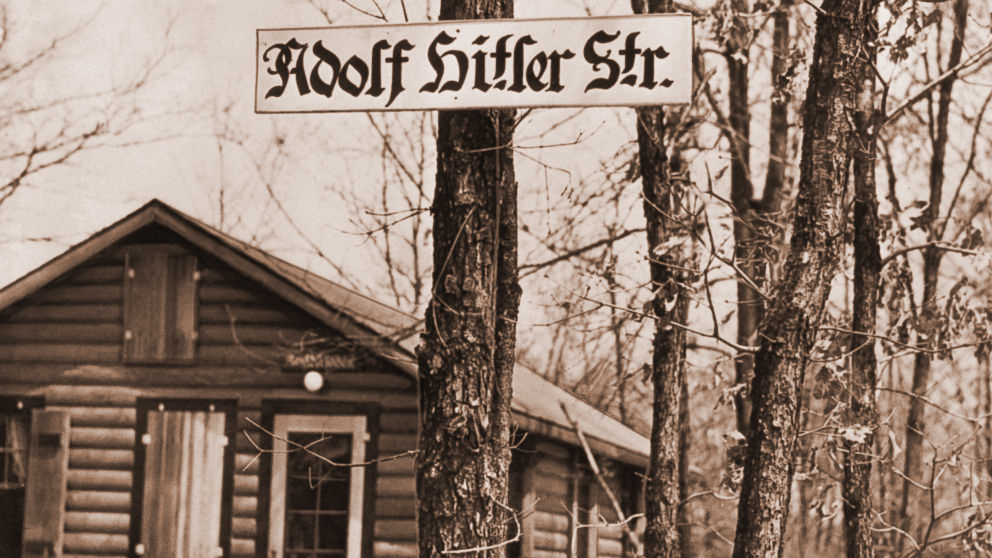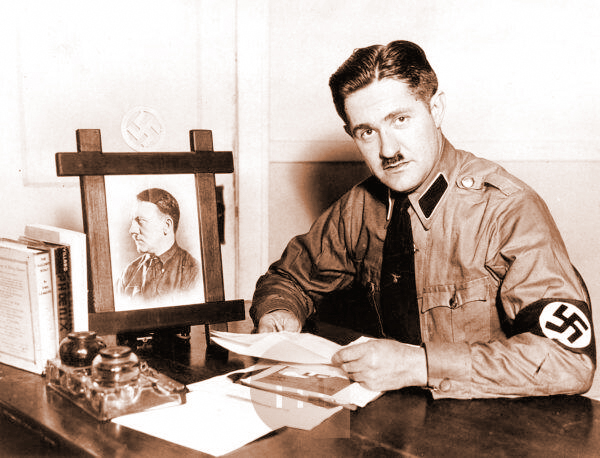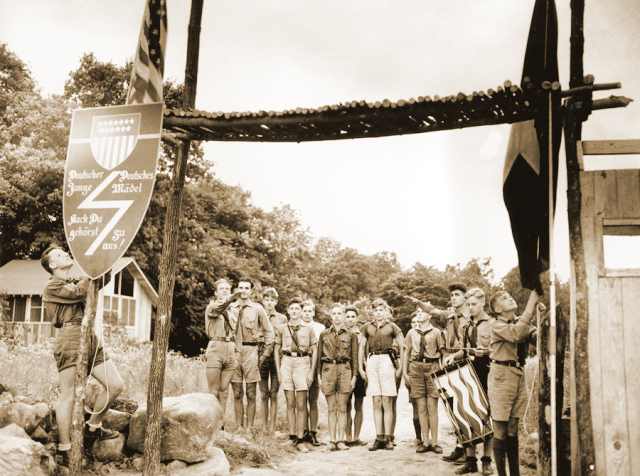Or:
On Jared Taylor’s cherries
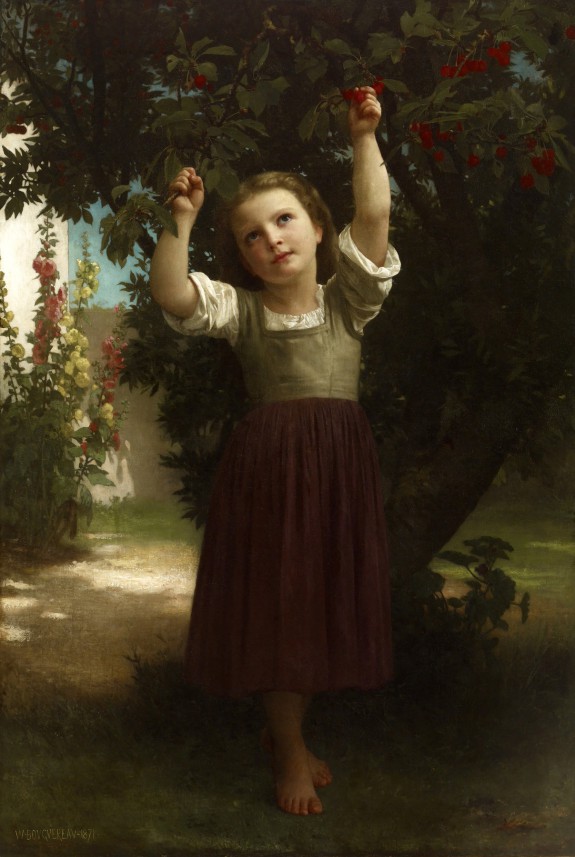
The Cherry Picker
William-Adolphe Bouguereau
(1825-1905)
His site [American Renaissance] is a valve escape for semi-normies to release their frustrations in a comfortable and safe way. —Jamie
This is a reply to ‘What the Founders Really Thought About Race’ by Jared Taylor, a classic American Renaissance article of February 17, 2012 republished yesterday on AmRen.
If there is one racialist who can be considered a patriot in the traditional sense of the word, he is Jared Taylor. Unlike the traditional sense, I prefer to say Your race is your nation, which means that the history of Sweden or Germany should be as important to the white nationalist as the history of his home country.
But Taylor cherry-picks historical facts that seem to put the history of the US (not of his race, his real nation) in a benign light. That’s why in yesterday’s article he said: ‘Today’s egalitarians are therefore radical dissenters from traditional American thinking’.
The truth is that there have always been egalitarian fanatics in his country, as we shall see.
The best way to answer Taylor is to quote his pal Brad Griffin of Occidental Dissent, who in 2008 and 2009 made a very long list of American racial history that is worth quoting, in abbreviated form, as I do below adding some comments of mine, including a few sentences in square brackets and emphasis in red letters. (*)
Griffin’s long list provides context to the subject of Taylor’s recent article, and demonstrates that the granddaddy of the Alt-Right, as Greg Johnson once called him, carefully cherry-picked some historical facts to provide an idealised picture of the US:
______ 卐 ______
American Racial History Timeline
1550
The term ‘negro’ enters the English language from Spanish. (Jordan, 61)
1600
The term ‘mulatto’ enters the English language from Spanish. (Jordan, 61)
1619
Twenty blacks brought by a Dutch ship to Virginia. Some blacks had arrived even earlier. (Davis, xi)
1637
Pequot War in Massachusetts. (Jordan, 68)
1638
First negroes arrive in New England aboard the slave ship Desire, perhaps as slaves. (Jordan, 67)
1652
Rhode Island outlaws slavery but the law remains a dead letter. (Jordan, 70)
1661
Maryland criminalizes intermarriage between white women and negro men. (Brown and Stentiford, 533)
1662
Virginia passes an anti-miscegenation law. (Jordan, 79)
Maryland passes an anti-miscegenation law. (Jordan, 79)
1676
Bacon’s Rebellion in Virginia. (Klinker and Smith, 10)
1681
Maryland passes another anti-miscegenation law. (Jordan, 79)
1688
Four Quakers sign antislavery petition in Germantown, Pennsylvania. (Davis, xii)
Virginia Assembly declares that free negroes ‘ought not in all respects to be admitted to a full fruition of the exemptions and impunities of the English’. Variations of this guideline are accepted in every colony. (Jordan, 123)
1691
Virginia passes an anti-miscegenation law that prohibits all interracial liasons. (Jordan, 80)
Virginia requires manumitted negroes to leave the state. (Jordan, 124)
1692
Maryland passes an anti-miscegenation law.
1700
Negroes are now commonly being treated as chattel slaves. (Jordan, 44)
In the Southern colonies, free negroes are unable by law to testify against white persons. In New England, free negroes can testify against anyone. (Jordan, 123)
1705
Virginia Assembly declares negroes ineligible to hold public office. (Jordan, 126)
Virginia writes its slave code. Free negroes from raising their hand against whites. (Jordan, 73) Slaves forbidden to carry firearms, teaching slaves to read a crime. (Brown and Stentiford, 223)
Massachusetts adopts an anti-miscegenation law. (Jordan, 139)
1712
Slave uprising in New York City. (Davis, xii)
1715
North Carolina and South Carolina bar negroes from the polls; North Carolina does not continue the prohibition after the 1730s. (Jordan, 126)
North Carolina adopts an anti-miscegenation law. (Jordan, 139)
1717
South Carolina adopts an anti-miscegenation law. (Jordan, 139)
1722-1740
South Carolina requires free negroes to leave the colony unless permitted to do so by special act of the assembly.
1723
Virginia bars negroes from the polls. (Jordan, 126)
Virginia prohibits manumission [the act of freeing slaves by their owners] of negroes. (Jordan, 124)
1726
Pennsylvania adopts an anti-miscegenation law.
1739
Stono slave rebellion in South Carolina. (Davis, xii)
1741
Slave conspiracy uncovered in New York City. Many hanged and burned at the stake. (Davis, xii)
1745
Massachusetts prohibits negroes from participating in a government lottery [an electorate system] . (Jordan, 130)
1750
British government sanctions slavery in Georgia, prohibited in 1735. (Davis, xii)
Georgia adopts an anti-miscegenation law after negroes are admitted into the colony. (Jordan, 139)
1758-1776
Quakers begin pre-Revolution antislavery agitation. (Jordan, 271)
1760
The [Newspeak] word and concept of ‘prejudice’ comes into circulation in the years after 1760. (Jordan, 276)
1761
Georgia restricts suffrage to white men. (Jordan, 126)
1762
Virginia disenfranchises negroes. (Keyssar, 354)
1763
The first known Asians arrive in the United States when a group of Filipinos known as the Louisiana Manila Men developed settlements in Louisiana. These individuals fail to attain U.S. citizenship, as the Naturalization Act of 1790 only granted citizenship to free whites. (Brown and Stentiford, 48)
1769
Virginia establishes castration as the penalty for convicted black rapists of white women. (Jordan, 473)
1770s
Denial of negro mental inferiority becoming common place in antislavery circles. Benjamin Franklin thought Negroes ‘not deficient in natural understanding’, though Alexander Hamilton seemed less certain when he remakred that ‘their natural faculties are perhaps probably as good as ours’. (Jordan, 282)
1770
Delaware forbids negroes from administering corporal punishment to whites. (Jordan,131)
1773-79
New England slaves petition legislatures for freedom. Increasing numbers of antislavery tracts are published in America. (Davis, xii)
1774
Rhode Island prohibits slave trade. (Jordan, 291)
Rhode Island raises a separate battallion of negroes to fight in the American Revolution; Georgia and South Carolina hold out to the end. (Jordan, 302)
1775-1783 – American Revolution
Negro soldiers participate in virtually every major military action of the American Revolution. (Litwack, 12)
George Washington orders recruiting officers not to enlist ‘any deserter from within the Ministerial army, nor any stroller, negro, or vagabond’. (Klinker and Smith, 17)
5,000 negro soldiers participate in the American Revolution. (Brown and Stentiford, 281)
1775
Lord Dunmore, royal governor of Virginia, promises freedom to any slaves who desert rebellious masters and serve in the king’s forces, an offer taken up by some eight hundred blacks. (Davis, xii)
The first secular antislavery organization is founded, The Society for the Relief of Free Negroes. (Jordan, 343)
Maryland and the Northern colonies do not officially bar negroes from the polls until the Revolution. (Jordan, 126)
1776
Declaration of Independence describes Indians as ‘merciless Indian Savages’. (Nugent, 4)
Thomas Jefferson’s indictment of slavery is removed from the Declaration of Independence out of fear that the Southern colonies, especially South Carolina and Georgia, would refuse to sign. (Brown and Stentiford, 462)
Thomas Paine publishes incendiary [egalitarian] pamphlet Common Sense. (Nugent, 7)
1777
Vermont’s constitution outlaws slavery. (Davis, xii, Jordan, 345)
1779
Thomas Jefferson’s revisal of the laws of Virginia calls for banishment of white women who have mulatto children: ‘If any white woman shall have a child by a negro or mulatto, she and her child shall depart the commonwealth within one year thereafter. If they shall fail so to do, the woman shall be out of the protection of the laws, and the child shall be bound out by the Aldermen of the county, in like manner as poor orphans are by law directed to be, and within one year after its term of service expired shall depart the commonwealth, or on failure so to do, shall be out of the protection of the laws’. (Jordan, 472)
Editor’s note: Note that this is very different from killing those who mixed their precious blood, as the Iberian Visigoths did before Christianity brainwashed them.
1780
Pennsylvania adopts a gradual emancipation law [in this context, emancipation was any effort to procure economic, social or political rights / equality to Negroes].
(Davis, xii, Jordan, 345)
Revolutionary era constitutions of Virginia, South Carolina, and Georgia exclude negroes from the franchise. (Jordan, 412)
An estimated 200,000 to 250,000 Indians are living east of the Misssissippi. By 1780, almost all Indians have been pushed west of the Appalachians. (Nugent, 10)
1781-1782
Thomas Jefferson writes his Notes on the State of Virginia. [Among other topics, he wrote extensively about slavery, his dislike of miscegenation, justifications of white supremacy, and his belief that whites and blacks could not co-exist in a society in which the latter were free.]
1782
Virginia legislature authorizes private manumission of slaves. (Jordan, 574)
1783
In Massachusetts, the case of Commonwealth v. Jennison is interpreted as removing any judicial sanctions for slavery. (Davis, xii)
Kentucky and Tennessee no longer seriously contested between whites and Indians. (Nugent, 48)
1784
The Pennsylvania Abolition Society is formed. (Davis, xii)
Connecticut and Rhode Island enact gradual emancipation laws. Congress narrowly rejects Jefferson’s proposal to exclude slavery from all Western territories after the year 1800. The New York Manumission Society [to abolish slavery] is organized. (Davis, xii)
1785
The New York assembly passes a gradual emancipation bill which would have barred Negroes from the polls [voting in today’s vocabulary] and from marrying whites, but the state senate objected to the intermarriage clause because ‘in so important a connection they thought the free subjects of this State ought to be left to their free choice’. The New York assembly voted again to keep the anti-miscegenation clause, but ultimately receded on it. (Jordan, 741-472)
John Jay and Alexander Hamilton [an American revolutionary, statesman and founding father of the United States of America] chair the New York Manumission Society. (Litwack, 14)
1786
In Massachusetts, an act of 1786 voids marriages between whites and Negroes. (Jordan, 472)
Massachusetts legislature votes to expel all negroes who are not citizens of one of the states. (Litwack, 16)
1787
Thomas Jefferson publishes Notes on State of Virginia, endorses racialism, negro intellectual inferiority, and calls for the colonization of free blacks to their native climate. (Jordan, 547)
The Constitution Convention agrees to count three-fifths of a state’s slave population in apportioning representation; to forbid Congress from ending the slave trade until 1808; and to require that fugitive slaves who cross state lines be surrendered to their owners. The Continental Congress enacts the Northwest Ordinance, prohibiting slavery in the territories north of the Ohio and east of the Mississippi rivers. (Davis, xiii)
The U.S. Constitution specifically excludes Indian nations from inclusion in the American political system. Classified as foreign nations and ‘Indians not taxed’, the Constitution gave Congress exclusive jurisdiction for dealing with Indian tribes. (Brown and Stentiford, 579)
U.S. antislavery movement becomes interested in vindicating Negro mental equality in reponse to Jefferson’s racial theories in his Notes on the State of Virginia. Equalitarianism will become a standard theme of abolitionist literature during the 1790s. (Jordan, 445-446)
South Carolina bans slave importations. (Jordan, 318)
All the states have by now banned the slave trade. (Jordan, 342)
Northwest Ordinance prohibits slavery in the Northwest Territory. (Jordan, 322)
Delaware legislature authorizes private manumission of slaves. (Jordan, 347)
1789-1797, George Washington Adminstration
1789
An ‘Address to the Public’ by the Pennsylvania Abolition Society, signed by its president, Benjamin Franklin, declared that the chains which bound the slave’s body ‘do also fetter his intellectual faculties; and impair the social affections of his heart’. (Jordan, 447)
William Pinkney, a famous Maryland state legislator, attacks slavery by arguing that Negroes and whites were ‘endued with equal faculties of mind and body’. He goes on to state that Negroes are ‘in all respects our equals by nature; and he who thinks otherwise has never reflected, that talents, however great, may perish unnoticed and unknown, unless auspicious circumstances conspire to draw them forth, and animate their exertions in the round of knowledge’. (Jordan, 447)
1790
New Jersey passes a law that allows all ‘qualified’ inhabitants to vote. (Keyssar, 54)
Quakers and the Pennsylvania Abolition Society petition Congress to use its fullest constitutional powers to discourage slavery and slave trade; the petitions evoke angry debate and attacks on petitioners by congressmen from the Deep South. (Davis, xiii)
Charles Crawford attacks Jefferson’s racialism in his Observations Upon Negro Slavery.
The first federal naturalization law, the Naturalization Act of 1790, restricts American citizenship to ‘free white persons’. (Jordan, 341)
An estimated 61 to 66 percent of Americans are of English origin and between 80 and 84 percent of English-speaking origin. (Jordan, 339)
Maryland legislature authorizes private manumission of slaves. (Jordan, 347)
1792
Virginia legislature specifically declares castration to be a permissible punishment for any slave ‘convicted of an attempt to ravish a white woman’. (Jordan, 473)
Gilbert Imlay attacks Jeffersonian racialism in his A Topographical Descritpion of the Western Territory of North America. (Jordan, 441-442)
Virginia slave code restricts the right of free negroes to purchase servants only of their own complexion. (Jordan, 407)
Congress passes a federal militia law which includes only ‘white’ men. (Jordan, 412)
Delaware disenfranchies negroes. (Keyssar, 354)
1793
Congress enacts a fugitive slave law. (Jordan, 327)
Virginia prohibits immigration of free negroes. (Farnam, 199-200)
1794
Congress passes a law forbidding Americans from participating in the international slave trade. (Jordan, 327)
1795
Before the mid-1790s many states extended to negro slaves the right of trial by jury in capital cases. Racial attitudes begin to harden again about ten years after the American Revolution. (Jordan, 403)
Treaty of Greenville. Indians cede title to 3/4ths of the future state of Ohio. (Nugent, 44)
1795-1808
Decline of the first antislavery movement. (Jordan, 348)
1796
Maryland legislature authorizes private manumission of slaves. (Jordan, 347)
1797-1801, John Adams Adminstration
1797
Connecticut adopts another gradual emancipation law. (Litwack, 3)
1798
Rhode Island passes a law that bans interracial marriage between blacks and whites. (Jordan, 472)
Kentucky legislature authorizes private manumission of slaves. (Jordan, 347)
1799
New York adopts a law for gradual emancipation. (Davis, xiv)
Kentucky disenfranchises negroes. (Keyssar, 354)
1800-1860
Until the post Civil War-era, Northerners draw a sharp distinction between negro civic equality, of which they approved, and political and society equality, which they did not. (Litwack, 15)
1800
Rhode Island legislature declares no paternity suits could be brought by Negro women against white men. (Jordan, 472)
South Carolina outlaws residence of free negroes. (Jordan, 399)
1801-1809, Thomas Jefferson Administration
1801
Tennessee legislature authorizes private manumission of slaves. (Jordan, 347)
Maryland statute disenfranchises negroes. (Keyssar, 354)
1802
James T. Callender makes his famous charge in the Richmond Recorder that it was ‘well known’ that Thomas Jefferson kept Sally Hemmings, one of his slaves, as a concubine and had fathered children by her. (Jordan, 465)
Editor’s note: If true, Jefferson deserved the punishment the Visigoths used for those who committed the sin against the holy ghost (miscegenation).
Georgia relinquishes claim to Alabama and Mississippi in exchange for a promise by the Jefferson administration that the federal government would seek voluntary removal of Indian tribes within her boundries. (Howe, 256)
1803
South Carolina reopens the slave trade. (Jordan, 318)
1804
Clement Clarke Moore, a New York scholar of Hebrew with Federalist sympathies, attacks Jefferson’s racial views in his Observations upon Certain Passages in Mr. Jefferson’s Notes on Virginia, Which Appear to Have a Tendency to Subvert Religion. (Jordan, 442)
1805
Yet again, both houses of the Virginia legislature adopt resolutions calling for the removal of free Negroes. The resolution of 1805 instructed Virginia congressmen to press for a portion of the Louisiana Territory for settlement of free Negroes. (Jordan, 565)
Virginia revises penal code and abolishes castration. (Jordan, 473)
1806
Hudgins v. Wright, the court decides that three generations of women with straight black hair were Indian, not black, and therefore free. (Brown and Stentiford, 535)
Virginia restricts the right of masters to manumit their slaves; free blacks must leave the state within one year. (Jordan, 574)
Ohio already prohibiting permanent residence of Negroes. (Jordan, 575)
Georgia enacts a mandatory death penalty for any Negro raping or attempting to rape a white woman. (Jordan, 473)
1807
Slave trade abolished in the United States. (Hinks and McKivigan, xxxix)
Maryland prohibits permanent residence of free negroes. (Jordan, 575)
Louisiana prohibits immigration of free negroes. (Farnam, 199-200)
1809-1817, James Madison Administration
1810
Reverend Samuel Stanhope Smith attacks Jefferson’s racialism in his An Essay on the Causes of the Variety of Complexion and Figure in the Human Species. He argues in a Boasian vein that the Negro skull and intellect has been deformed by his harsh environment. (Jordan, 443)
Proportion of Free Negroes:
Delaware: 75.9%
Maryland: 23.3%
Virginia: 7.2%
North Carolina: 5.7%
South Carolina: 2.3%
Georgia: 1.7% (Jordan, 407)
All Southern and two Northern states pass laws either restricting immigration of free Negroes, banning it altogether, or requiring emigration of emancipated slaves. (Jordan, 410)
1811
Delaware prohibits immigration of free negroes. (Farnam, 220)
1812
Louisiana admitted to the Union. (Nugent, 70)
Louisiana disenfranchises negroes. (Keyssar, 354)
James Madison’s war message references Indian attacks along the Northwestern frontier, ‘the warfare just renewed by the savages on one of our extensive frontiers: a warfare which is known to spare neither age nor sex and to be distinguished by features peculiarly shocking to humanity’. (Nugent, 82)
1812-1814, War of 1812
Negro soldiers participate in the War of 1812. (Brown and Stentiford, 281)
1813-1815
Creek War. (Nugent, 117)
1814
Treaty of Fort Jackson. Creeks are forced to cede much of their land in Alabama and Georgia. (Nugent, 227)
1814-1838
Connecticut, New York, Rhode Island, Tennessee, North Carolina and Pennsylvania prohibit or drastically restrict voting by negroes. (Jordan, 414)
1816
Bishop Richard Allen founds the African Methodist Episcopal Church. (Brown and Stentiford, 252)
1817-1825, James Monroe Administration
Under the Monroe administration, Secretary of War John C. Calhoun encourages gradual resettlement of Southern Indian tribes across the Mississippi. (Howe, 255)
1817
New York adopts a law that frees all remaining slaves in 1827. (Davis, xiv)
Indiana passes an anti-miscegenation law. (Farnam, 216)
1818
Illinois abolishes slavery. (Litwack, 3)
1818-21
The Missouri Crisis, followed by the Compromise of 1820 and further debate over Missouri’s constitution, which restricts entry of free blacks and mulattos. (Davis, xiv)
1819
Adams-Onís Treaty. Acquisition of Florida by the United States. (Nugent, 96)
Appropriation from the Monroe administration supports the American Colonization Society. [The American Colonization Society (ACS), originally known as the Society for the Colonization of Free Coloured People of America until 1837, was founded in 1816 by Robert Finley to encourage and support the migration of free blacks to Africa.]
1820
By 1820, free negroes could not exercise certain rights and privileges guaranteed to American citizens and aliens. (Litwack, 33)
American Colonization Society makes its first attempt at African colonization by settling 86 negroes and their families on Sherbro Island off the west coast of Africa. (Brown and Stentiford, 59)
Editor’s note: In a futuristic, post-Christian Western civilization that complies with Nietzsche’s revaluation of all values, these pious measures will be deemed unnecessary.
1821
American Colonization Society establishes the colony of Liberia on the west coast of Africa. (Brown and Stentiford, 59)
1822
Mississippi prohibits immigration of free negroes. (Farnam, 199-200)
1824
Ohio state legislature passes a resolution proposing African colonization linked with gradual emancipation. The resolution is soon seconded by seven other free states and Delaware. (Howe, 265)
Elizabeth Heyrick anonymously publishes the pamphlet Immediate, not Gradual Emancipation. (Hinks and McKivigan, xl)
1825-1829, John Quincy Adams Administration
1825-1842
Indian Removal in the Old Southwest (Five Civilized Tribes) and Old Northwest (Shawnees, Sac and Fox, Potawatomies, Miamis). In 1825, the War Department estimated that more than 50,000 Indians were in Georgia, Tennessee, Alabama, and Mississippi. By 1838, more than 80,000 Indians had been removed to Oklahoma, Kansas, and Nebraska. As of 1855, only 8,500 Indians lived east of the Mississippi. The Old Southwest together with Ohio, Illinois, and Indiana were basically Indian free by 1842. (Nugent, 229)
1825-1830
The first minstrel shows appear. (Howe, 639) [The minstrel show was a form of racist American entertainment developed in the early 19th century. Each show consisted of comedy sketches, variety acts, dances and musical performances depicting people specifically of African descent. The shows were performed by mostly white people wearing blackface or make-up to play the role of black people.]
1826
North Carolina prohibits immigration of free negroes. (Farnam, 199-200)
Florida Territory prohibits immigration of free negroes. (Farnam, 199-200)
1827
Gradual emancipation comes to an end in New York. Slavery abolished. (Howe, 174)
Founding of America’s first negro newspaper, Freedom’s Journal. (Hinks and McKivigan, xl)
Several slave states begin to invest in Liberia. They organize themselves independently of the ACS and established colonies in an effort to transport free negroes to Liberia. Approximately 11,000 negroes relocated before the movement ended. (Brown and Stentiford, 59)
1828
Moses Elias Levy, the most prominent Jewish abolitionist in the United States, publishes his Plan for the Abolition of Slavery. (Hinks and McKivigan, xl)
Abolitionist Benjamin Lundy begins publication of his newspaper, The Genius of Universal Emanicpation. (Hinks and McKivigan, xl)
1829-1837, Andrew Jackson Administration
1829
Illinois passes an anti-miscegenation law. (Farnam, 216)
1830
By 1830, whether by legislative, judicial, or constitutional action, negro slavery had been virtually abolished in the North. Of the 3,568 negro remaining in bondage, two-thirds resided in New Jersey. (Litwack, 14)
1831
Cherokee Nation v. Georgia, John Marshall rules that the Cherokees are a ‘domestic dependent nation’, not a sovereign state. (Howe, 355)
William Lloyd Garrison begins publishing The Liberator, an abolitionist newspaper, in Boston. (Hinks and McKivigan, xl)
After 1831, abolitionists would vigorously denounce colonization [i.e., sending blacks to Africa]. (Litwack, 27)
Before it is crushed, Nat Turner’s Rebellion leads to the death of sixty whites in Southampton County, Virginia. (Hinks and McKivigan, xl)
Tennessee prohibits immigration of free negroes. (Farnam, 199-200)
1832
Following the Nat Turner slave rebellion, Virginia debates colonization of slaves and free blacks abroad. Both sides in the debate agree that Virginia should be a ‘white man’s country’. (Howe, 326)
Founding of the New England Anti-Slavery Society (NEASS) in Boston. (Hinks and McKivigan, xl)
Alabama prohibits immigration of free negroes. (Farnam, 199-200)
Formation of racially integrated Boston Female Anti-Slavery Society. (Hinks and McKivigan, xl)
1833
American writer Lydia Maria Childs publishes An Appeal in Favor of That Class of Americans Called Africans. (Hinks and McKivigan, xl)
The American Anti-Slavery Society (AASS) is founded in Philadelphia; the group favors the immediate emancipation of American slaves. (Hinks and McKivigan, xl)
1834
Massachusetts repeals its anti-miscegenation law. (Farnam, 216)
1835-1842
Second Seminole War. (Howe, 516)
1835
The word ‘white’ is added to North Carolina’s constitutional requirement. (Keyssar, 55)
An extensive postal campaign by the American Anti-Slavery Society uses the postal system to send abolitionist literature throughout the country and especially into the south. (Hinks and McKivigan, xl)
Alexis de Tocqueville, a French traveller in the United States of the 1830s, publishes his Democracy in America, in which he calls slavery ‘evil’.
1836
Anglos outnumber Hispanics ten to one in Texas. (Howe, 660)
Battle of the Alamo. (Howe, 665)
Texas independence declared. Anglo-Texans almost exclusively Southerners and wage race war against mestizos. Northerners regard Texas as an outpost of slavery. Their opposition prevents the annexation of Texas under the Van Buren administration. (Howe, 665-666, 670)
Founding of the New York Committee of Vigilance, one of the most radical negro abolition societies in the United States. (Hinks and McKivigan, xl)
In its decision on Commonwealth v. Aves, the Massachusetts Supreme Court sets an important precedent by declaring that slavery cannot exist in Massachusetts except as it is regarded by the U.S. Constitution; thus, any slave brought to the state was immediately freed and the only slaves that could exist in Massachusetts were fugitive slaves whose return was mandated by the federal Fugitive Slave Act. (Hinks and McKivigan, xl)
1837-1841, Martin Van Buren Administration
1837
An angry mob in Illinois murders abolitionist publisher Elijah P. Lovejoy as he attempts to prevent destruction of his press. (Hinks and McKivigan, xli)
1838-1839
Deporation of Cherokees to Oklahoma. (Howe, 416)
1838
David Ruggles publishes the first negro magazine in the U.S., the Mirror of Liberty. (Hinks and McKivigan, xli)
1839
Texas ethnically cleanses Creeks, Cherokees, and other Indians from east Texas. (Nugent, 155)
Formation in the United States of the antislavery Liberty Party. (Hinks and McKivigan, xli)
Abolitionists Theodore Dwight Weld, Angelina Grimke Weld, and Sarah Grimke publish their antislavery pamphlet, American Slavery As It Is: Testimony of a Thousand Witnesses. (Hinks and McKivigan, xli)
1840
Brothers Lewis and Arthur Tarpan found the American and Foreign Anti-Slavery Society. (Hinks and McKivigan, xlii)
1841-1845, John Tyler Administration
1841
Former president John Quincy Adams delivers final arguments before the Supreme Court in defence of the thirty-four negro captives from the Amistad. The U.S. Supreme Court rules that the Amistad captives were never legally slaves and thus are free to return to Africa. (Hinks and McKivigan, xlii)
1842
The Anglo-American Webster-Ashburton Treaty establishes the Africa Squadron, an American naval squadron charged with patrolling the west coast of Africa to intercept any American vessels illegally engaged in the slave trade. (Hinks and McKivigan, xlii)
1843
4,291 American negroes have settled in Liberia; over ten thousand more would come before the Civil War. (Howe, 262)
Reverend Stephen Symonds Foster publishes The Brotherhood of Thieves, or a True Picture of the American Church, a searing indictment of American evangelical Christians for their complicity in the sin of slavery. (Hinks and McKivigan, xlii)
1844
Ralph Waldo Emerson gives an important speech, commemorating the tenth anniversary of emancipation in the British West Indies, affirming the human dignity of negroes. (Howe, 625)
1845-1855
New York, Ohio, Indiana, and Wisconsin reaffirm racial exclusion of negroes from the polls in constitutional conventions or popular referenda. (Keyssar, 55)
1845
Former slave Frederick Douglass publishes his influential Narrative of the Life of Frederick Douglass, An American Slave, Written by Himself. (Hinks and McKivigan, xlii)
Abolitionist Lysander Spooner publishes the first part of his famous work, The Unconstitutionality of Slavery; the second part of the work appears in 1847.
1845-1849, James K. Polk Administration
1846-48, Mexican War
The Mexican War leads to the annexation of much Western territory, including California, thereby igniting much controversy over the expansion of slavery. (Davis, xiv)
1846-1847
Wilmot Proviso passed repeatedly by the House of Representatives. Called the ‘White Man’s Proviso’, Wilmot’s declared purpose was to ‘preserve free white labor a fair country, a rich inheritance, where the sons of toil, of my own race and own color, can live without the disgrace which association with negro slavery brings free labor’. Endorsed by ten Northern state legislatures. (Howe, 767-768)
1846
War breaks out between the United States and Mexico. (Hinks and McKivigan, xlii)
1847
Former slave Frederick Douglass publishes the first issue of his abolitionist newspaper, North Star. (Hinks and McKivigan, xlii)
Liberia, the West African colony of resettled negroes, becomes independent. (Hinks and McKivigan, xlii)
1848
Treaty of Guadalupe-Hidalgo is signed, ending the Mexican-American War and transferring large tracts of territory from Mexico to the United States. (Hinks and McKivigan, xliii) Mexican Cession of the American Southwest. (Nugent, 187)
The first women’s rights convention held in the United States, the Seneca Falls Convention, meets in Seneca Falls, New York. (Hinks and McKivigan, xliii)
1849-1850, Zachary Taylor Administration
1850s
Martin R. Delany leads a ‘Back to Africa’ movement.
1850
The federal census first begins taking note of mulattoes. (Brown and Stentiford, 534)
Origin of ‘separate but equal’ doctrine in Robert v. the City of Boston. (Brown and Stentiford, 106)
With assistance from other abolitionists, illiterate former slave Sojournor Truth publishes her memoirs, The Narrative of Sojournor Truth: A Northern Slave. (Hinks and McKivigan, xliii)
In a speech delivered on a debate on the Compromise of 1850, Senator William H. Seward speaks of a ‘higher law’ beyond the Constitution, i.e., God’s law, that demands no compromise with slavery. (Hinks and McKivigan, xliii)
1851
New Iowa constitution omits its anti-miscegenation clause. (Farnam, 216)
Indian Appropriations Act.
Former slave Sojournor Truth delivers her famous speech, ‘Ar’nt I a Woman?’, at the women’s convention in Ohio. (Hinks and McKivigan, xliii)
1852
Harriet Beecher Stowe publishes her controversial novel, Uncle Tom’s Cabin. (Hinks and McKivigan, xliii)
1854
Founding of the Republican Party. (Brown and Stentiford, 678)
Escaped slave Anthony Burns is arrested in Boston under the provisions of the Fugitive Slave Act of 1850; despite demonstrations on his behalf, Burns is returned under guard to Virginia, although Boston abolitionists later purchase his freedom. (Hinks and McKivigan, xliii)
1855
Only five states do not discriminate against negroes in voting rights: Maine, Massachusetts, Vermont, Rhode Island, and New Hampshire.
These states contain only 4% of America’s free black population. Negroes also prohibited from voting in U.S. territories. (Keyssar, 55)
1856
American pacifist Elihu Burritt publishes A Plan for Brotherly Co-Partnership of the North and South for the Peaceful Extinction of Slavery. (Hinks and McKivigan, xliv)
Abolitionist John Brown and his sons murder five proslavery settlers at Pottawatomie Creek in Kansas in retaliation for the sack of Lawrence. (Hinks and McKivigan, xliv)
1857
George Fitzhugh publishes his most famous proslavery volume, Cannibals All! or Slaves Without Masters. (Hinks and McKivigan, xliv)
Hinton Rowan Helper publishes his controversial book, The Impending Crisis of the South and How to Meet It, which decries the economic effects of slavery on the South and vehemently attacks the region, the Democratic Party, and negroes. (Hinks and McKivigan, xliv)
1858
Lincoln-Douglas debates in Illinois. (Davis, xv)
1859
Charles Darwin publishes On the Origin of Species. (Howe, 466)
1860
436,000 slaves in Mississippi. Negroes account for over 55% of Mississippi’s population. (Brown and Stentiford, 536)
November 6 – Abraham Lincoln becomes the first Republican elected president. (Zuczek, xlix)
December 20 – South Carolina secedes from the federal Union. (Zuczek, xlix)
1861-1865, American Civil War
Abraham Lincoln declares the Civil War a ‘white man’s fight’ and says that no negroes, free or slaves, would be accepted into the Union forces, but reneges on his policy in 1862 due to mounting losses. Negroes fight in segregated units under white commanders. (Brown and Stentiford, 282)
1861-1865, Abraham Lincoln Administration
1861
January-June – Ten other slaves states secede from the Union. (Zuczek, xlix)
Jefferson Davis begins his term as president of the Confederate States of America, whose constitution gave recognition and protection to ‘the institution of negro slavery’. (Davis, xv)
1862
Battle of Antietam, Maryland, between Generals Robert E. Lee and George B. McClellan gives Lincoln encouragement to issue Preliminary Emancipation Proclamation. (Davis, xv)
1864
The term ‘miscegenation’ appears for the first time in an anonymous pamphlet, Miscegenation: The Theory of the Blending of the Races, Applied to the American White Man and Negro. (Brown and Stentiford, 526)
1865-1869, Andrew Johnson Administration
1865
Civil War ends; slavery officially abolished (Thirteenth Amendment); KKK formed.
January 31 – Congress passes the Thirteenth Amendment, which will formally abolish slavery in the United States. It is sent to the states for ratification. (Zuczek, li)
April 14 – President Lincoln is shot while watching a play at Ford’s Theater in Washington, D.C. (Zuczek, li)
South Carolina – Miscegenation Statute prohibited marriage between a white person and a person of color. (Jim Crow History.org)
1866
June 13 – Congress passes the Fourteenth Amendment and sends it to the states for ratification. (Zuczek, lii)
1868
South Carolina – Barred school segregation (Constitution). All public schools and universities to be free and open to all persons regardless of race or color. (Jim Crow History.org)
End of Indian Wars on Southern Plains. (Nugent, 229)
July 28 – The Fourteenth Amendment to the U.S. Constitution is ratified, granting equal protection under the law to all American citizens. It also confers citizenship to every person born in the United States, including former slaves. (Brown and Stentiford, xxiii)
1868-1871
The South is swept by a wave of Ku Klux Klan terrorism. (Keyssar, 105)
Civil Rights Act of 1871 (‘Ku Klux Klan Act’).
1869-1877, Ulysses S. Grant Administration
1869
February 25 – Congress passes the Fifteenth Amendment and sends it to the states for ratification. (Zuczek, liv)
South Carolina – Barred public accommodation segregation (Constitution)
Gave all classes of citizens without regard to race or color equal access to public, legal and political privileges. Included the right to intermarry. (Jim Crow History.org)
1870
Black men (and ostensibly other male ethnic/racial minorities) officially given voting rights with the passage of the Fifteenth Amendment
California finally recognizes Mexican-Americans as citizens. (Howe, 810)
1871
Mississippi – Barred anti-miscegenation (State Code), omitted miscegenation or intermarriage statute. (Jim Crow History.org)
1874
All of New England has outlawed de jure segregation in schools. (Fitzgerald, 171)
June – Appearance of White League in Louisiana, terrorist organization aimed at overthrowing Republican Kellogg. (Zuczek, lvi)
August 30 – White League murders Republicans in the Coushatta Massacre. (Zuczek, lvi)
1875
Rough beginning of the Jim Crow Era.
1876
July 7 – Hamburg Massacre in South Carolina, as election campaigning puts Republican negro militiamen against white conservative gun clubs. (Zuczek, lvii)
September 16-19 – In South Carolina a three day, countywide killing spree conducted by white gun clubs earns the name the Ellenton Riot; ends with direct intervention by U.S. infantry units. (Zuczek, lvii)
October 16-17 – White attack on a Republican meeting, called the Cainhoy Riot, leads Grant to send more federal troops to South Carolina for the election. (Zuczek, lvii)
1877-1881, Rutherford B. Hayes Administration
1877
The Compromise of 1877 removes the last of the federal troops from the former Confederate states. Reconstruction ends, but the Jim Crow period is not underway fully. (Brown and Stentiford, xxiii)
End of Reconstruction.
1877-1965, Jim Crow America
1878
Mississippi – Education (Statute) prohibited teaching white and black children in the same school. (Jim Crow History.org)
1880
Mississippi – Miscegenation (State Code) revised state code to declare marriage between white persons and Negroes or mulattoes or persons of one-quarter or more Negro blood as ‘incestuous and void’. Penalty: Fine up to $500, or imprisonment in the penitentiary up to ten years, or both. (Jim Crow History.org)
In re Camille, federal district court in Oregon denies citizenship to a half white/half Indian man on the basis of race.
1881, James A. Garfield Administration
1881
Tennessee enacts the first law requiring racial segregation on public trains. (Brown and Stentiford, xxiii)
1881-1885, Chester A. Arthur Administration
1882-1900
1,700+ negroes lynched in America. (Blum, 3)
1882
The Chinese Exclusion Act drastically limits the number of Chinese immigrants to the United States and requires all Chinese residents who leave the United States to reapply for reentry. (Brown and Stentiford, xxiii)
1883
Pace v. Alabama, Supreme Court upholds the constitutionality of Alabama’s anti-miscegenation law. (Brown and Stentiford, 535)
1884
Elk v. Wilkins, Supreme Court rules that Indians, as tribal citizens, were not covered by the Fourteenth Amendment and were not citizens of the United States. (Brown and Stentiford, 580)
Arkansas – Miscegenation (State Code). All marriages of white persons with Negroes or mulattoes declared illegal. (Jim Crow History.org)
1885
Florida – Miscegenation (Constitution) ‘forever’ prohibited marriages between whites and blacks, or between a ‘white person and a person of Negro descent to the fourth generation inclusive’. (Jim Crow History.org)
1885-1889, Grover Cleveland Administration
1886
Surrender of Geronimo and the Apaches ends the Indian Wars in the Southwest. (Nugent, 229)
1887
Disenfranchisement of native Hawaiians. (Nugent, 264)
1889-1893, Benjamin Harrison Administration
1890-1910
Blues, ragtime, and jazz develop in Southern cities, particularly New Orleans, as the most popular music forms amongst negroes. (Brown and Stentiford, xxiv)
Franz Boas’s anthropological work eventually developed the notion of culture as distinct from race. (Brown and Stentiford, 529)
1890
The Indian Naturalization Act grants U.S. citizenship to Indians in certain areas under certain conditions. (Brown and Stentiford, 580)
In re Hong Yen Chang, federal district court in California denies American citizenship to Chinese on the basis of race.
1892
April – In response to anti-negro violence and the rise of lynchings across the South, negro journalist Ida B. Wells begins an anti-lynching crusade that grows to international dimensions. (Zuczek, lix)
The Geary Act extends the Chinese Exclusion Act and required all Chinese residents of the United States to carry a resident permit. Failure to carry the permit at all times was punishable by deportation or a year at hard labour. In addition, Chinese were not allowed to bear witness in court, and could not receive bail in habeas corpus proceedings. (Wikipedia)
1893-1897, Grover Cleveland Administration
1894
In re Saito, federal district court in Massachusetts denies American citizenship to the Japanese on the basis of race.
In re Po, federal district court in New York denies American citizenship to Burmese on the basis of race.
1895-1900
An average of 101 negroes are lynched per year. (Klarman, From Jim Crow to Civil Rights, 3)
1895
South Carolina – Miscegenation (Constitution) prohibited marriage between a white person with a Negro or mulatto, or a person who had one-eighth or more Negro blood. (Jim Crow History.org)
1896
Mississippi – Education (Statute) separate districts established for the schools of white and black children. (Jim Crow History.org)
The Democratic Party triumphs in the South by promising white supremacy at the polls. (Brown and Stentiford, xxiv)
1897
In re Rodriguez, federal district court in Texas denies American citizenship to Mexicans on the basis of race.
1897-1901, William McKinley Administration
Spanish-American War, 1898-1899
Acquistion of Hawaii, Wake Island, Guam, Puerto Rico, and the Philippines. (Nugent, 240)
1898
United States v. Wong Kim Ark, Supreme Court rules that the U.S. government could not deny citizenship to anyone born in the United States, even someone of Chinese ancestry. (Oyez)
1899
In re Kanaka Nian, a federal district court denies citizenship to native Hawaiians on the basis of race.
December 18 – Supreme Court, in Cummings v. Richmond County (Georgia, declares segregation in the schools is legal under the Fourteenth Amendment. (Zuczek, lix)
1899-1902, American-Filipino War
1900
Race riot in New Orleans is sparked by a shoot-out between the police and a negro labourer. Twenty thousand people are drawn into the riot that lasted four days. (Brown and Stentiford, xxiv)
Race riot in New York City. (Brown and Stentiford, 128)
1901-1909, Theodore Roosevelt Administration
1901
Alabama – Miscegenation (Constitution) declared that the legislature could never pass any law authorizing or legalizing ‘any marriage between any white person and a Negro, or descendant of a Negro’. (Jim Crow History.org)
Between 1901 and 1947, the California state government enacted laws that created segregated communities for ‘Asian Americans’. (Brown and Stentiford, 49)
1902
Thomas Dixon, Jr. publishes his response to Harriet Beecher Stowe, The Leopard’s Spots: An Historical Romance of the White Man’s Burden, 1865-1900, a best-selling novel which introduces readers to the Negro Problem and trauma that the North inflicted upon the South during Reconstruction. (Brown and Stentiford, 237)
1904
Race riot in Springfield, Ohio. (Brown and Stentiford, 128)
Congress bars Chinese immigration with amendments to the Chinese Exclusion Act. (Brown and Stentiford, 53)
Kentucky passes the ‘Day Law’ which requires racial segregation of all public and private schools. (Brown and Stentiford, 438)
1905
The Niagara Movement forms. An organization of black intellectuals who opposed Booker T. Washington and his Tuskegee Machine, the Niagara movement promoted negro political equality and voting rights. (Brown and Stentiford, xxv)
1906
Founding of U.S. based journal, Eugenics and Social Welfare Bulletin. (Brown and Stentiford, 530)
Rumours of negro assaults on white women lead to a race riot in Atlanta. The riot claims the lives of 25 negroes and one white. Hundreds are injured. (Brown and Stentiford, xxv)
Editor’s note: Compare it to the way today’s Britons react—like lobotomised eunuchs—when hundreds of pubescent English roses are raped by Orcs.
1908
Louisiana – Miscegenation (Statute). Concubinage between the Caucasian or white race and any person of the Negro or black race is a felony. Penalty: Imprisonment from one month to one year, with or without hard labour. (Jim Crow History.org)
1909-1913, William Howard Taft Administration
Federal patronage of negroes sharply curtailed under President Taft. (Brown and Stentiford, 679)
1909
National Association for the Advancement of Colored People is founded in New York City. Some of the members of the Niagara Movement contribute to the founding of the NAACP. The board of directors of the NAACP includes several white progressives. (Brown and Stentiford, xxv)
1910-1930
‘Great Migration’ of 500,000 negroes to the North. (Gilmore, 17)
1911
Franz Boas (Jew) publishes The Mind of Primitive Man, a turning point in anthropological thought, ushering in the notion of cultural relativism and the ethnological method. (Brown and Stentiford, 529)
1912
First International Conference on Eugenics. (Brown and Stentiford, 530)
Woodrow Wilson Administration, 1913-1921
1913
Anti-Defamation League (ADL) formed.
Massive expansion of federal government with the passage of the Sixteenth Amendment, which formed the IRS.
U.S. v. Sandoval, Supreme Court describes American Indians as ‘essentially, a simple, uninformed and inferior people’ incapable of exercising the privileges of citizenship. (Brown and Stentiford, 581)
Florida – Education (Statute): Unlawful for white teachers to teach Negroes in Negro schools, and for Negro teachers to teach in white schools. (Jim Crow History.org)
1914-1918, First World War
World War I engulfs Europe, and involves much of the world through colonial empires and alliances. (Brown and Stentiford, xxv)
1915
Texas – Miscegenation (State Code): The penalty for intermarriage is imprisonment in the penitentiary from two to five years. (Jim Crow History.org)
Lynching of Leo Frank in Georgia. (Gilmore, 197)
Film director D.W. Griffith adapts several novels by Thomas Dixon, Jr. into the nation’s first modern motion picture, The Birth of a Nation, which depicts the Ku Klux Klan as heroic defenders of white womanhood and civilization. (Brown and Stentiford, xxv)
Editor’s note: Again, compare it to the worst generation of whites since prehistory.
Rebirth of the Ku Klux Klan in Stone Mountain, Georgia. (Brown and Stentiford, 239)
1916
Founding of U.S. based journal, Eugenical News. (Brown and Stentiford, 530)
Madison Grant publishes The Passing of the Great Race. (Brown and Stentiford, 562)
1917-1920 First Red Scare (widespread anti-Jewish sentiment because they are correctly associated with Communism and revolutionary activities).
1917
Buchanan v. Warley, Supreme Court invalidates laws requiring racial segregation of neighborhoods. (Brown and Stentiford, 114)
First use of ‘racialist’ in the English language. (Online Etymology Dictionary)
1919
Race riots across the nation claim more than 200 lives. The biggest riot is in Chicago. (Brown and Stentiford, xxv) Race riot in Charleston, South Carolina; in Longview, Texas. (Brown and Stentiford, 128)
‘Red Summer’ – an estimated 25 race riots in the United States. (Brown and Stentiford, 128)
1920
The Nineteenth Amendment passes, granting the right to vote to women. (Brown and Stentiford, xxv)
Lothrop Stoddard publishes The Rising Tide of Color Against White World-Supremacy.
1921-1923, Warren Harding Administration
1921
Second International Conference on Eugenics. (Brown and Stentiford, 530)
A race riot in Tulsa, Oklahoma, nearly wipes out the entire negro area, including the ‘Black’ Wall Street. (Brown and Stentiford, xxv)
Arkansas – Miscegenation (Statute) prohibits cohabitation between whites and blacks and defines the term ‘Negro’ as any person who has any Negro blood in his veins. (Jim Crow History.org)
Editor’s note: The right way to define him: the zero-drop rule.
1922
Henry Ford’s The International Jew published.
Ozawa v. United States, Supreme Court confirms the policy which refused American citizenship to Japanese immigrants. (Brown and Stentiford, 401) Editor’s note: The US wasn’t crazy a hundred years ago!
1923-1929, Calvin Coolidge Administration
1923
Rosewood Massacre in Florida. (Brown and Stentiford, 304)
Dyer federal anti-lynching bill defeated by Southern opposition in Congress. (Brown and Stentiford, 197)
United States v. Bhagat Singh Thind, Supreme Court rules that Indians (subcons) are not white and denies citizenship to ‘Indian-Americans’.
1924
Immigration Act of 1924 restricts immigration from Southern and Eastern Europe. (Brown and Stentiford, 53)
1925-1935
American Communists alone arguing for complete equality of the races. (Gilmore, 4)
1925
Psychologists begin to attack the concept of inherent mental differences between racial groups. (Barkan, 5)
1926
Arthur Estabrook and Evan McDougle publish Mongrel Virginians: The Win Tribe. (Brown and Stentiford, 275)
Corrigan v. Buckley, Supreme Court upholds the constitutionality of racial covenants. (Brown and Stentiford, 720)
1927
Supreme Court rules in Lum v. Rice that ‘separate but equal’ applies to Asians and is within the discretion of the State in regulating its public schools and does not conflict with the 14th Amendment. (Brown and Stentiford, 235)
1928
Founding of U.S. based journal, Eugenics: A Journal of Race Betterment. (Brown and Stentiford, 530)
The Ku Klux Klan makes a large march down Pennsylvania Avenue in Washington, D.C. (Brown and Stentiford, 445)
Anti-lynching bill dies in Congress. (Brown and Stentiford, 256)
American communists continue their campaign against segregation. The national platform of the CPUSA includes calls for full racial equality, the abolition of Jim Crow laws, enfranchisement of African Americans, integration of schools, juries, unions, and the military, a federal law against lynching, the end of chain gangs, and equal job opportunities and pay. (Brown and Stentiford, 177)
1929-1933, Herbert Hoover Administration
The crash of the stock market reveals serious problems with the American economy. (Brown and Stentiford, xxvi)
1930s
‘Raciology’ a vanishing vocation. (Barkan, 4)
Editor’s note: This is why the text by a Spaniard on racial classification is so important in my collection of essays (The Fair Race’s Darkest Hour). Raciology is a science that no longer exists in today’s ethnosuicidal West.
1930
The Hays Code prohibits depictions of miscegenation in Hollywood films. (Brown and Stentiford, 533)
Editor’s note: The prohibition was forgotten some decades later, within my lifetime. I still remember an episode in the late 1960s when Captain Kirk kisses a mulatta in Star Trek: the first time ever we saw such a thing on TV!
1932
Third International Conference on Eugenics. (Brown and Stentiford, 530)
First use of ‘racist’ as a noun in the English language. (Online Etymology Dictionary)
Franklin D. Roosevelt is elected president. His promise of a New Deal and a ‘Black Cabinet’ in 1933 attracts many negro voters to the Democratic Party. (Brown and Stentiford, xxvi)
1933-1945, Franklin Delano Roosevelt Administration
1933
NAACP begins its legal campaign to desegregate education. (Gilmore, 2)
1936
Pearson v. Murray, Maryland Supreme Court orders the University of Maryland Law School to admit negro students. (Brown and Stentiford, 112)
Jesse Owens wins four gold medals at the Summer Olympics in Berlin. (Brown and Stentiford, xxvi)
1937
Death of Madison Grant.
1938
The American Anthropological Association unanimously passes a resolution condemning racism. (Gilmore, 199)
1939-1945, Second World War
1939
Television is introduced to the American public at the New York World’s Fair. (Brown and Stentiford, 770)
Thomas Dixon, Jr. publishes his final novel, The Flaming Sword, which claims communism and miscegenation threaten to destroy America. (Brown and Stentiford, 239)
1940s
The University of Pennsylvania, the most racially egalitarian university in 1946, boasted only 40 negroes out of an institutional enrollment of 9,000. (Brown and Stentiford, 595)
1941-1945, Second World War (U.S. involvement)
The United States joins the Allies and wages war against the Axis Powers of Germany, Japan, and Italy in World War II.
1942-1945
Discrimation and internment against some Americans of Italian and German descent.
1945-1953, Harry Truman Administration
1945-1947
Note of the Editor: A true Holocaust perpetrated by the Allies against the Germans: the best-kept secret in modern history (pace Jared Taylor, the Nazis, not the American founding fathers, were the true defenders of the Aryan race).
Cold War, 1947-1991
1947
President Truman’s Committee on Civil Rights issues its 178-page report, ‘To Secure These Rights’. The report calls for laws requiring states to end discrimination in education, mandating a ban against discrimination in the armed services, laws to guarantee fair employment practices for blacks, federal prohibition of lynching, repeal of poll taxes and other discriminatory voting restrictions, denial of federal grants when discrimination in evidence, an expanded civil rights division at the Justice Department, creation of permanent civil rights commissions at the federal and state levels, specific federal ban on police brutality, and enforcement of a Supreme Court decision against restrictive real estate covenants. (Roberts and Klibanoff, 38)
1948
President Harry S. Truman orders the desegregation of the U.S. military with Executive Order 9981. (Brown and Stentiford, xxvi)
Perez v. Sharp, California Supreme Court strikes down California’s anti-miscegenation law. (Brown and Stentiford, 397)
1950s
The first segment of the Civil Rights Movement is underway by 1954.
Emergence of rock and roll music.
1950
Henderson v. United States, Supreme Court abolishes racial segregation in railroad dining cars. (Roberts and Klibanoff, 49)
Thirty states still have anti-miscegenation laws on the books. (Brown and Stentiford, 503)
Ralph Bunche becomes the first negro to win the Nobel Peace Prize. (Klarman, From Jim Crow, 3)
1952
The McCarran-Walter Act lifts the ban on Asian immigration established by the Asian Exclusion Act. (Brown and Stentiford, 54)
1953-1961, Dwight Eisenhower Administration
1954
The Supreme Court decides for the plantiffs in the landmark Brown v. Board of Education. The ruling makes illegal segregation and discrimination in the nation’s public schools. (Brown and Stentiford, xxvi)
1956
Gayle v. Browder, Supreme Court outlaws segregation in all public transportation. (Brown and Stentiford, 615)
1957
Allen v. Merrill, Indians gain the right to vote in Utah. (Brown and Stentiford, 581)
Clash in Little Rock, Arkansas, over the desegregation of Central High School. President Eisenhower dispatches federal troops to keep order and enforce desegregation. (Schuman et al, 54)
The Civil Rights Act of 1957 pledges the federal government to prosecute abuses of negro civil rights. (Brown and Stentiford, xxvii)
1958
Cooper v. Aaron, Supreme Court rules unanimously for integration to proceed immediately at Little Rock Central High School in Arkansas. (Brown and Stentiford, 186-187)
1959
George Lincoln Rockwell founds the American Nazi Party.
1960s-present
Editor’s note: Whites adopt anti-Nazism as their new religion and, throughout the entire West, hand over the zeitgeist of their culture to their ancestral enemies, the Jews.
1964
Civil Rights Act.
1967
Loving v. Virginia – miscegenation effectively legalized across the U.S.
1971
Southern Poverty Law Center (SPLC) formed.
2008
First black president elected in the United States.
2020
BLM riots are officially the most costly manmade damage to American property in history.
______ 卐 ______
Editor’s note: On The Unz Review, Robert Morgan commented today:
C.T.: Since you specialize in debunking what the racial right has to say about Lincoln, I’d like to hear your opinion on a classic American Renaissance article, republished this day in Jared Taylor’s webzine… Although I am not an expert in American history, I have the impression that he is telling things in a very biased way.
You’re right. A charitable way to put it is ‘biased’. I’d state more directly that it’s a package of lies designed to mislead. Take his statement that Jefferson freed no slaves. That’s just false. In his will he freed children of Sally Hemings, a quadroon who was his dead wife’s half sister and almost certainly his mistress. He was likely the father of those children.
Then we have Taylor’s telling of Jefferson’s supposed horror of race mixing. LOL! If he thought it so horrible, why did he engage in it?
He predictably mentions the American Colonization Society, but ‘forgets’ to tell his readers that it was in the ACS Charter that any ‘colonization’ [deportation in today’s vocabulary—Editor’s note] of negroes was to be on a voluntary basis only. Needless to say, the idea that all the negroes were going to leave voluntarily always was a joke. Perhaps some American Christians, who also claim to believe absurdities such as corpses coming back to life, were stupid enough to believe this would happen, but intelligent people such as the first few American presidents must have always known it was a ludicrous expectation.
He also brings up the Naturalization Act of 1790, which allowed only whites to become naturalized citizens, without explaining that naturalization was only one way for people to become citizens. Plenty of non-whites were made citizens by treaty, for example in the 1848 Treaty of Guadalupe Hidalgo, when the USA acquired lands from Mexico. Also, at the time the Constitution was being written, free negroes had already been allowed to become citizens in several of the 13 original states. Later Constitutional Amendments after the Civil War gave national citizenship and the vote to all of them.
He repeats the Kevin MacDonald spin on the 1965 immigration reform, without telling his readers that the 1924 Act it rescinded allowed for unlimited immigration from anywhere in the Western hemisphere. Imagine, if that provision had remained in force, every negro in Haiti and Brazil would now be living in the USA!
He quotes Henry Ward Beecher in one of his speeches collected in the book Patrtiotic Addresses:
Henry Ward Beecher, brother of Harriet Beecher Stowe who wrote Uncle Tom’s Cabin, expressed the majority view: ‘Do your duty first to the colored people here; educate them, Christianize them, and then colonize them’.
But he again leaves out a crucial detail, namely that H.W. Beecher too advocated only a voluntary departure of the negroes. Beecher goes on to say that to even think of forcing them out for the benefit of whites would be a sin! (LOL, gotta love these Christian loonies!)
All in all, the article is just typical Jared Taylor BS. Since he makes his living from his website, I can only surmise that he thinks telling his readers what they want to hear increases donations.
At AmRen’s comments section, yesterday a commenter criticised Taylor’s article with these words: ‘Blah, blah, blah: Dissecting a speech [Lincoln’s] and a movement whose very purpose was intended to bring about abolition, the author will slice and dice the words until they are shown to mean Abraham Lincoln had the very opposite purpose in mind. But that’s what liberals do: lie’.
_________
(*) Brad Griffin’s sources:
David Brion Davis, Inhuman Bondage: The Rise and Fall of Slavery in the New World (Oxford: Oxford University Press, 2006).
Winthrop D. Jordan, White Over Black: American Attitudes Toward the Negro, 1550-1812 (Chapel Hill: University of North Carolina Press, 1968).
Christopher Lasch, The Revolt of the Elites: And the Betrayal of Democracy (New York and London: W.W. Norton & Co., 1995).
Howard Schuman, Charlotte Steeh, Lawrence Bobo, and Maria Krysan, Racial Attitudes in America: Trends and Interpretations, Revised Edition (Cambridge, MA: Harvard University Press, 1997).
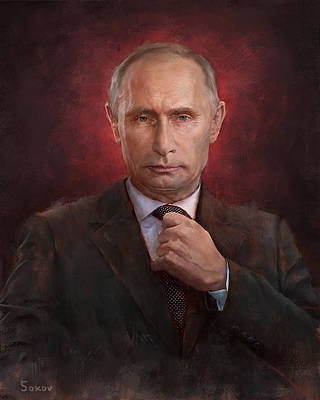 The West’s Darkest Hour does not comment on the news unless one of them changes the course of History.
The West’s Darkest Hour does not comment on the news unless one of them changes the course of History.
